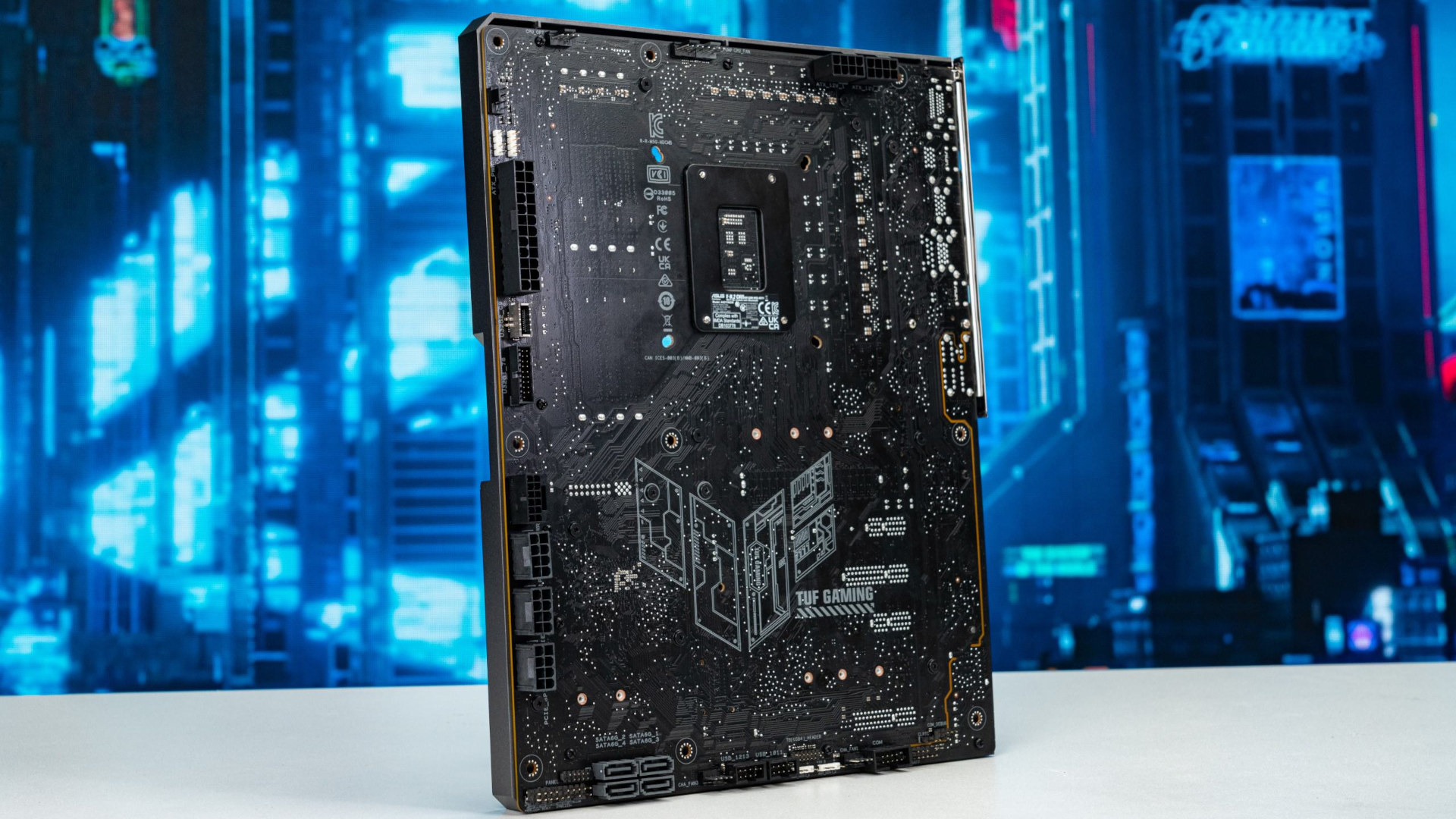
What you need to know
- ASUS is developing GeForce RTX 4070 graphics cards powered by a proprietary slot on a new motherboard style.
- The new cards will require a 'Back to Future' (BTF) motherboard featuring the appropriate GC_HPWR connectors alongside a traditional PCIe x16 slot.
- Mass production for the ASUS cards and BTF motherboards is planned for late 2023 in the Fall.
It's not the first time ASUS has discussed its plans for cable-free graphics cards, as Tom's Hardware reported the notion of replacing 16-pin PCIe power cables with a more discreet replacement back in May. Still, ASUS presented a demo at Computex 2023 with a prototype variant of a GeForce RTX 4070 desktop GPU that opted for a proprietary connector mounted alongside the traditional PCIe x16 slot.
This new slot, temporarily named 'GC_HPWR,' passes the necessary power for the RTX 4070 through to a more traditional strip of PSU connectors mounted onto the back of a new motherboard format. ASUS is reportedly mass-producing hardware (via Tom's Hardware) designed for these 'Back to Future' (BTF) motherboards, meaning consumers won't be able to use the cable-free RTX 4070 GPUs with older, traditional boards.

The supposed mass production claims come from a video uploaded by BiliBili creator Eixa Studio, filmed at the recent Bilibili World 2023 technology exhibition in China. Plans for ASUS to start its production efforts towards the end of 2023 in the Fall are still rumors, but it hints that consumer-grade hardware could be available before 2024.
Potentially avoiding the issue of high-end GPUs suffering from melting cable problems, the GC_HPWR method is undoubtedly aimed at custom PC builders seeking a tidy aesthetic. Whether or not it'll be worth an expected premium is up to the consumers.
Windows Central take

I'm sure most PC builders are familiar with the 'universal standard' problem that never has any real solutions, just additions of more competing standards that further fracture the components market and drive up the price. Don't get me wrong, one of my most common reoccurring daydreams is the desire to build the cleanest, most aesthetically-driven custom PC of my life, and removing GPU power cables from the equation would fit into that niche perfectly.
However, I don't think ASUS will be the one to convince me to become an early adopter, not after the debacle with AMD Ryzen 7000X3D-series CPUs burning up and destroying motherboards that sent me down an almost endless avenue of constantly updating the BIOS on my ROG STRIX board to try and prevent overheating as the result of manufacturer oversights during production. Even the temptations of picking up an ASUS ROG Ally were quickly tempered by reports of overheating, causing the death of microSD cards.
To be fair to ASUS, it has addressed and remedied each issue as thoroughly as possible, and I don't doubt it'll iron out issues with BTF motherboards and cable-free GPUs as they launch. Still, I'm not jumping on that hype train right from the get-go. Too much anxiety leftover from RTX 4090 cable meltdowns and fried CPU pins on expensive motherboards. Large pass.







